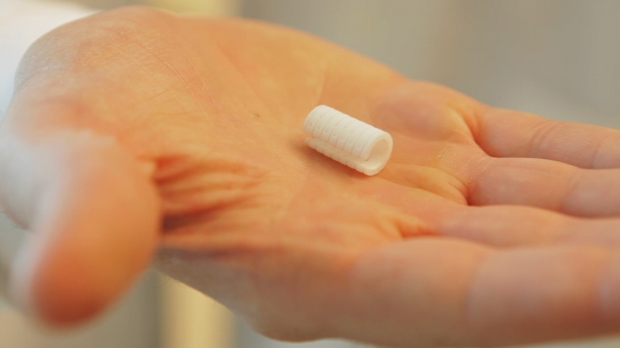Printed on a 3D printer trachea extender saved the life of a child

Now 3D printing is penetrating deeper and deeper into our lives, including such areas as medicine, life and others. As for medicine, 3D printing is almost indispensable here. With the help of specialized printers, the ears are printed , then, as in this case, a trachea dilator for a child with pathology is created. And after all, all this really works, it is in the literal sense of the word "The future is here."
Born in one of the US clinics, the infant suffered from a strong manifestation of such a pathology as tracheobronchomatization. Such deviations occur once in 2200 normal births (US statistics). The born child doctors predicted a gradual deterioration with a possible fatal outcome in a short time. The disease itself is expressed in a significant expansion of the respiratory tract with a simultaneous weakening of the wall. And in this case, the bronchi just stuck together, so to speak, not allowing air to pass into the lungs. The child was constantly connected to the respirator.
')

One can only imagine what the parents felt. But neither the doctors nor the parents themselves were idle. They were looking for salvation, and they did find it: they just created a tracheal splint at the University of Michigan, which eventually dissolves in the body. At that time, the prosthesis, if you can call it that, has not yet been approved by the relevant authorities, and the developers have tried in a short time to go through the entire approval process.
By the way, the prosthesis was created from polycaprolactone biopolymer, which, as mentioned above, dissolves (albeit very gradually) in the patient's body. In the case of an infant, the specialists printed out a model of a section of its respiratory system, and created a prosthesis of the appropriate size. The prosthesis is then "wrapped" around the child's airway, preventing the convergence of the walls of the bronchi. A year has passed since then, and the baby still breathes normally. After another couple of years, the prosthesis will finally resolve, but the airways should return to normal by then.
Via ScienceDaily
Source: https://habr.com/ru/post/180907/
All Articles